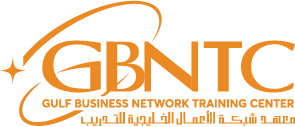With the advancement of science and research, the approach to managing unwanted organisms has evolved significantly. Traditional methods are slowly giving way to cutting-edge solutions that integrate advanced monitoring systems. Electronic monitoring has emerged as a pivotal strategy, allowing for real-time data collection and analysis, which helps in making informed decisions about handling infestations.
The integration of smart devices into this field has transformed how we perceive and tackle unwanted organisms in various environments. From agricultural settings to urban spaces, the implementation of these high-tech solutions enhances the precision and responsiveness of management efforts, leading to healthier ecosystems and improved agricultural yields.
Smart Traps and Monitoring Systems for Urban Management
The rise of smart traps and monitoring systems has significantly transformed how we address urban infestations. These systems utilize advanced data analysis and remote sensing to detect pest activity more accurately. By integrating real-time monitoring tools, professionals can promptly respond to emerging challenges in various environments. For more insights on this subject, check out https://andystermiteandfumigation.com/.
Automated traps equipped with electronic monitoring capabilities enable continuous surveillance without constant human oversight. These devices not only capture pests but also provide valuable data regarding their population dynamics and movement patterns. Assisting in implementing targeted interventions, such systems enhance urban management practices.
- Real-time alerts: Notifications are sent directly to managers when an issue arises, allowing for quick decision-making.
- Data-driven insights: Analysis of collected information helps identify trends and hotspots of infestation, guiding strategic responses.
- Integration with heat treatments: Coupling these traps with heat applications targets pests effectively while minimizing chemical usage.
- Improved environmental safety: By reducing reliance on conventional methods, these systems promote a healthier urban ecosystem.
The convergence of automated traps and integrated systems marks a significant advancement in urban management strategies. By leveraging innovative strategies, urban areas can achieve more sustainable and controlled environments. The future of urban management lies in sophisticated applications that ensure both effectiveness and safety.
Biopesticides: Harnessing Natural Solutions to Combat Pests
The use of biopesticides offers a promising alternative to synthetic chemicals, utilizing naturally occurring substances to manage harmful organisms. These eco-friendly products, derived from plants, microorganisms, or natural materials, play a significant role in sustainable agriculture and urban landscapes. More information on biopesticides can be found here.
As urbanization accelerates, the importance of integrating biopesticides into urban environments has become evident. Alongside traditional methods, remote sensing and electronic monitoring enhance the implementation of these natural solutions. By employing automated traps and data analysis, practitioners can effectively assess pest populations and determine the optimal timing for treatment, ultimately reducing reliance on chemical interventions.
Integrating biopesticides with advanced methods such as heat treatments can further amplify their potency. This synergy not only minimizes environmental impact but also improves the overall health of ecosystems. Such approaches are critical in promoting a balanced coexistence between humans and nature, paving the way for a more sustainable future.
Drone Technology in Agriculture: Surveillance and Targeted Treatments
Utilizing remote sensing capabilities, drones are transforming the way farmers monitor their fields and manage various infestations. Equipped with high-resolution cameras and thermal imaging, these flying devices provide real-time data that allows for precise spot assessments, ensuring farmers can intervene where necessary. For an in-depth exploration of these advancements, you can visit this resource.
The integration of drone technology in agricultural practices enables electronic monitoring of crop health and pest activity. This approach fosters a deeper understanding of the problem areas, thereby facilitating targeted treatments. With advanced data analysis techniques, farmers can quickly determine the urgency and type of intervention required, such as deploying automated traps for pest capture or strategically applying eco-friendly products for plant protection.
Moreover, these aerial solutions significantly increase the precision of heat treatments aimed at eliminating pests. By targeting specific zones with higher level interventions, the overall environmental impact is minimized. This refined method not only preserves beneficial organisms but also supports sustainable farming practices.
As the agricultural community embraces drone technology, the ability to conduct proactive surveillance and engage in immediate pest management has never been more achievable. The synergy between aerial monitoring and targeted interventions represents a forward-thinking approach to cultivating healthy crops while maintaining ecological balance.


Comments are closed